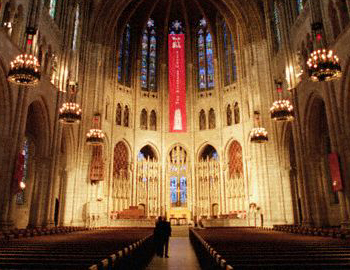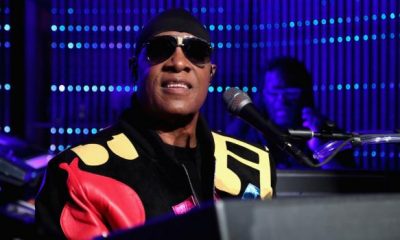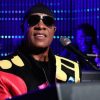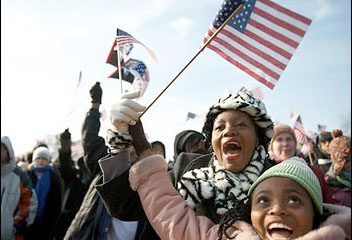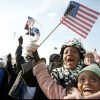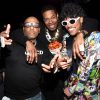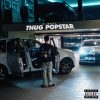The Humanities
New York Church Serves as a Model for Diversity Church Builders
Dr. Martin Luther King Jr. once described 11 a.m. on Sunday as the most segregated hour in the nation. The ethnically-rich congregation at The Riverside Church in New York, however, would probably garner Dr. King’s stamp of approval.
Riverside, with more than 2,700 members, is known for its unique ability to appeal to the sizeable mix of white, black, Latin, Arab, Asian and Southeast-Asian Americans it leads. The interdominational church even embraces other religions by hosting programs geared toward members and visitors of Jewish and Muslim faith.
“It’s a more progressive place,” says Scott Colglazier, Riverside’s chief program minister. “Finding a church as diverse as Riverside is rare.”
Now, as more churches seek diverse memberships, many are looking to Riverside as a national model for a well-integrated, inclusive metropolitan church.
Riverside is the model of a multicultural church, and a model for the steps it took to get there,” says James Hudnut-Beumler, professor of American religious history at Vanderbilt University and co-author of “The History of the Riverside Church in the City of New York.”
Churches Go Multicultural
More churches are searching for new ways to diversify their congregations as part of a membership growth and survival strategy, with churches adjusting its leadership, worship style and locations to attract other ethnicities and to better adapt to the changing demographics of U.S. cities.
But despite the effort, only 7% of all U.S. churches are considered racially or ethnically “mixed,” — that is, when no one group makes up more than 80% of the congregation, according to a recent study by researchers at Rice University. Diversity is even poorer among certain Christian denominations, such as Episcopal, Presbyterian, which were less than 2% mixed on average, the study said.
Inside the church, America’s history of racial separation is on display through separate religious cultures, worship styles, publishing houses, divinity schools and denominations based on race, religious scholars say.
“American society—its neighborhoods, its schools, its friendships, its marriages —remain segregated,” says Michael Emerson, a professor of sociology at Rice University and author of several books exploring religion and race. “So the fact that congregations are built and grown through social networks makes it difficult in this context to be racially mixed.”
Even when churches are successful at diversity, challenges remain on how to best integrate new members. For example, church leaders must often navigate around the sensitivities surrounding song selection, service schedule and ethnic humor to avoid offending or excluding any group.
“When people first start attending racially/ethnically diverse congregations they think there is no problem, no extra difficulty in doing so,” Emerson says. “But when the honeymoon period ends, problems can arise.”
Religious scholars say churches that do succeed at multiculturalism typically have diverse leaders, who work in unison to resolve issues. “A lot of churches attempt to become multicultural but few can carry it on for very long,” Hudnut-Beumler says. “The ones that survive manage to have a lay and clergy power structure that share things.”
Building a Model Over the years, as U.S. churches remained segregated, Riverside took several bold and unusual steps to ensure the church was inclusive of all ethnicities.
For example, Riverside once raised eyebrows at a 1947 Christmas pageant for featuring four versions of baby Jesus: one who was African American, one white baby, one Chinese-American baby and one Native American. “That’s the kind of progressive understanding that was in place at Riverside,” Hudnut-Beumler says.
Another move toward integration by Riverside Church occurred in 1950s when the city built Ulysses S. Grant public housing projects just a few blocks from the church. The units changed the community’s dynamics from one of Columbia University students and labor-class Irish immigrants to a more diverse and urban environment, Hudnut-Beumler says. To integrate Grant’s black residents into the church community, Riverside built a new wing to house a school and other programs.
The additional wing, which was later named after Dr. King, helped church leaders open Sunday school services to the community. It also repealed an earlier application-only Sunday school admissions policy.


